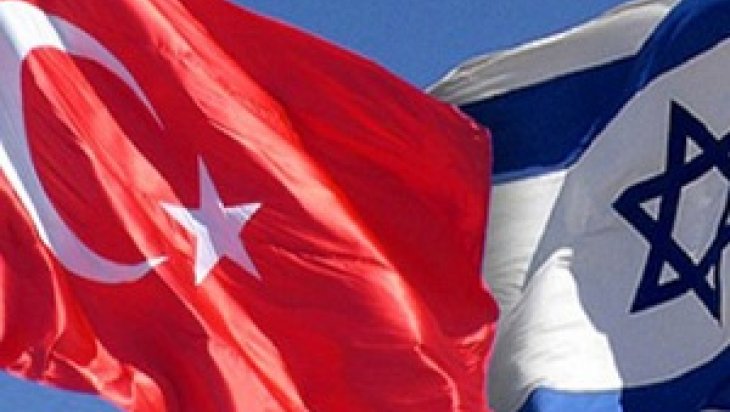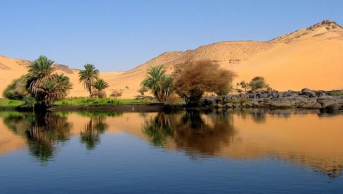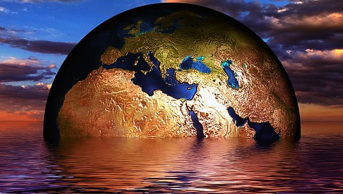The Water Dimension in Turkish-Israeli Rapprochement

Gaza strip has long been one of the epicenters of water crisis in the eastern Mediterranean coast, also known as the Levant. The recent Turkish-Israeli deal, which involves the issue of water as one of its core elements, has a significant potential to ameliorate the water problems in Gaza.
In a report dating back in 2011, the UN found that “Gaza’s population would increase from 1.6 million in 2011 to 2.1 million in 2020”, and concluded “for Gaza to be a liveable place in 2020 ‘herculean efforts’ needed to be accelerated in such sectors as health, education, energy, water and sanitation.”
In mid-2014, the Israeli military operation in the Gaza Strip, which took place during the conflict in July and August 2014, further caused tremendous damage to water infrastructure in the region. A UN Report on UNCTAD assistance to the Palestinian people: Developments in the economy of the Occupied Palestinian Territory (2015) summarizes the size of the damage as follows: a- 20–30 per cent of the water and sewage network damaged, b- Water desalination plant in Deir al-Balah damaged c-Total damage to the agricultural sector at $550 million and d- 220 agricultural wells destroyed or badly damaged. According to the Report, “the preliminary static value of the damage is estimated by the Palestinian Water Authority at more than $34 million. However, long-term repair of the accumulated damage and decay of the water and sanitation infrastructure will require $620 million.”
The main water resource of Gaza is known to be the coastal aquifer. It has been excessively exploited for decades. As a result, the groundwater level has reduced to critical edge which causes the seawater intrusion to the aquifer. It has been reported that the usage of coastal aquifer triples the natural rate of replenishment of 60 million cubic meters per year. There is wide consensus that exhausting this vital water resource should soon be stopped. United Nations Environment Program (UNEP) and Palestinian Water Authority have even stated that the coastal aquifer has already passed “the point of no return” and will not be available for water pumping after 2016.
Having discussed the severity of the water crisis, particularly regarding the situation in coastal aquifer, the UNCTAD Report suggests ceasing“abstraction and install a monitoring system to continuously assess recovery”, and “once the aquifer recovers, sustainable abstraction may be resumed at carefully calculated levels.” The Report proposes that desalination, water importation, reduction of the loss of water in the distribution network, wastewater treatment and repairing of the sewage network may be utilized as alternative sources of water in the meantime.
Apart from lack of sufficent amounts of drinking water, lack of water is also intrinsically linked to food security. According to UN figures, 72 per cent of households in Gaza strip is affected by food insecurity and half the population of Gaza (around 870,000) depends on the fooddistributedby United Nations agencies by May 2015.
Under the terms of the recent deal, between Turkey and Israel,according to media sources, Israel will allow the completion of a hospital in Gaza, as well as the construction of a new power station, and a water desalination plant for drinking water.
Construction of desalination plant is significant in at least four ways. First, the overexplotation of the coastal aquifer can be halted -or at least- can be reduced. Secondly, providing sufficient amounts of drinking water to people living in Gaza can be achieved. A slightly less probable contribution might be supplying some water for food production. Finally, it will be the one the first projects Turkey initiated in the seawater desalination sector. Previously, the water-related aids to Gaza from Turkey have concentrated on digging wells to pump groundwater, which turned out to be useless given the low quality of groundwaters in Gaza.
In Gaza strip, a water desalination plant funded by a Turkish aid organisation (named Ribat) started operation in 2015, close to Al-Shati refugee camp. Having a capacity of desalinating some 25,000 cubicmeters of drinking water daily, the plantis providing some 5,000 refugees in the camp. The new desalination plant would presumably be larger than this pioneer. The downside is, desalinated water is still expensive, despite the steady drop in the costs for many years. Given the level of incomes in Gaza, inhabitants’ inability to pay the high price of desalinated water may require continuous foreign aid which raises doubts about the sustainability of these projects. Additionally, the potential harms to the marine environment that may caused by the brine should be critically analyzed.
On the other hand, gaining experience in desalination technologies can gradually open up a new path where more Turkish firms may invest in this sector back in Turkey. However, as in all cases, pros and cons (particularly environmental risks) should be meticulously evaluated for each specific project.
To conclude, the recent deal between Turkey and Israel includes a water dimension with a potential of creating new possiblities for Gaza and beyond. Nevertheless, questions about economic and environmental sustainabilty remains to be answered.










